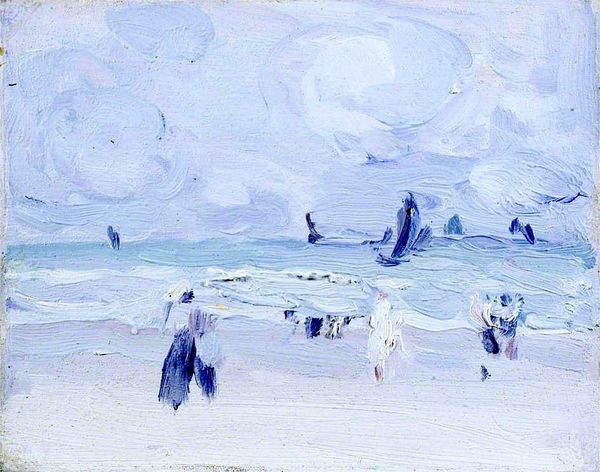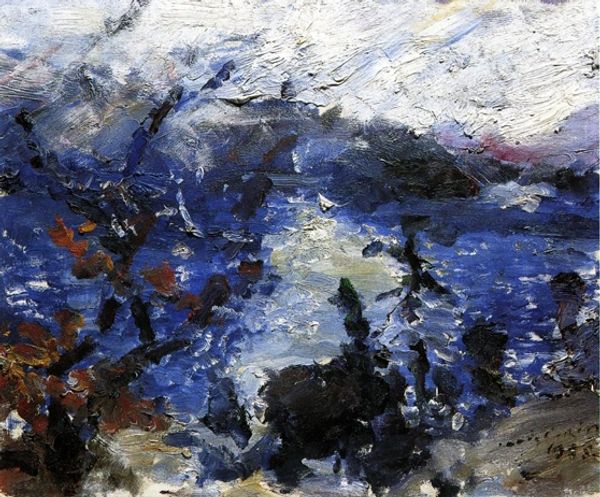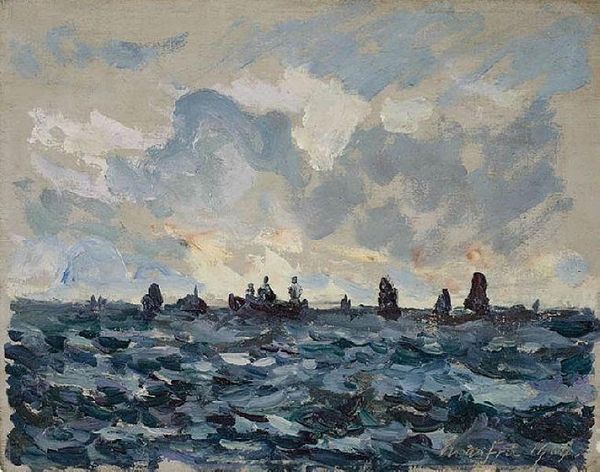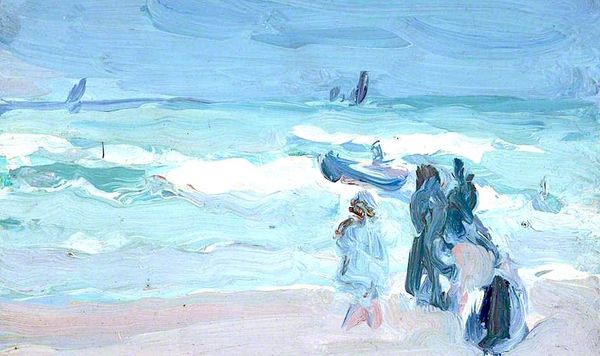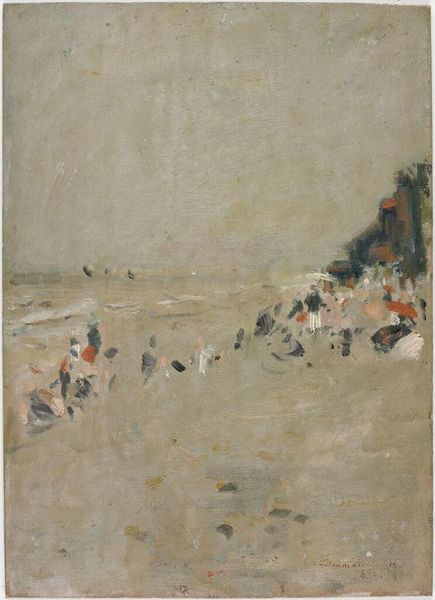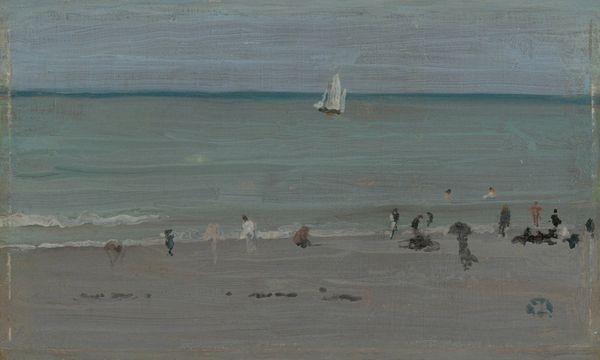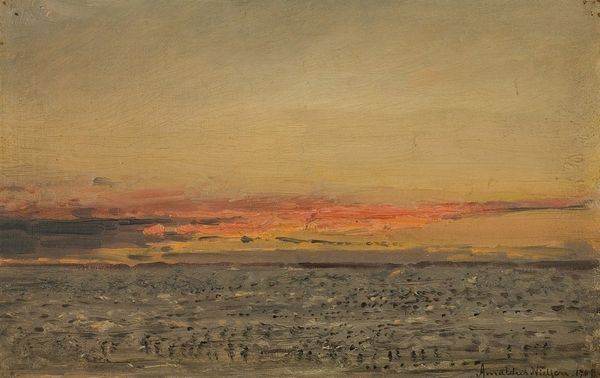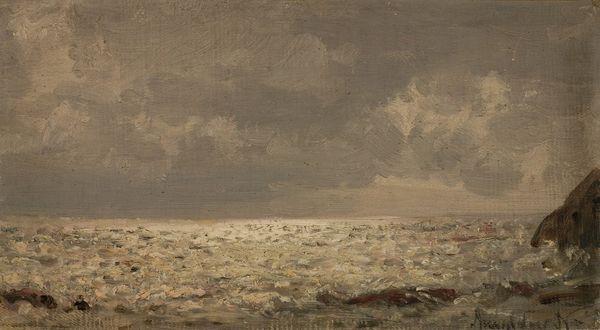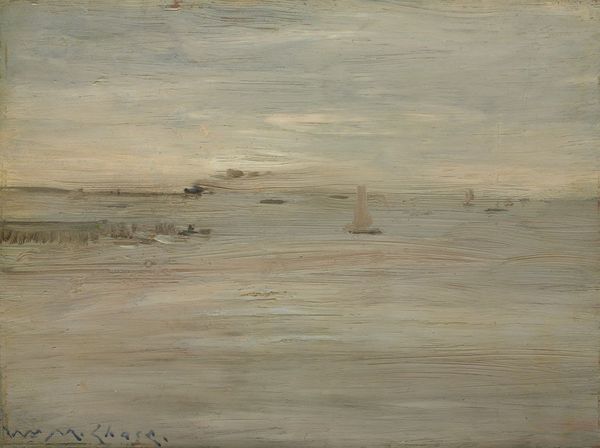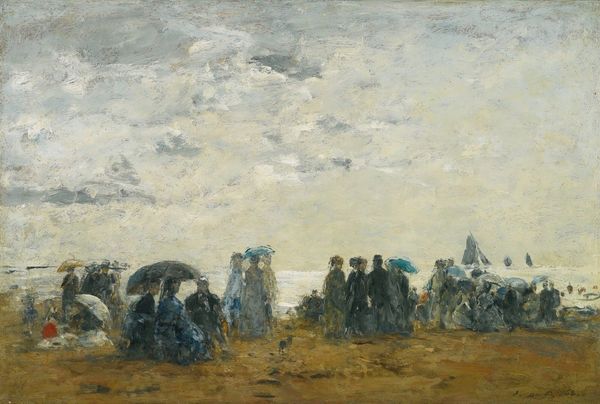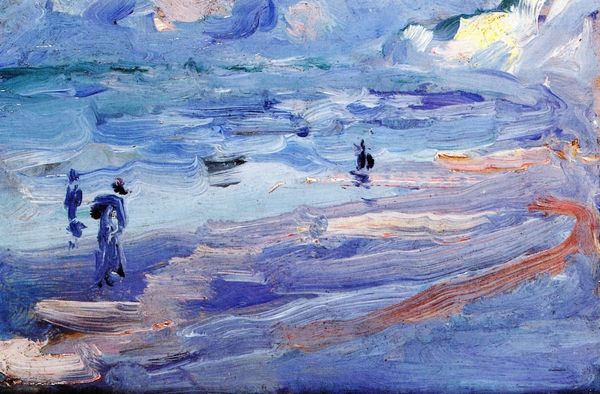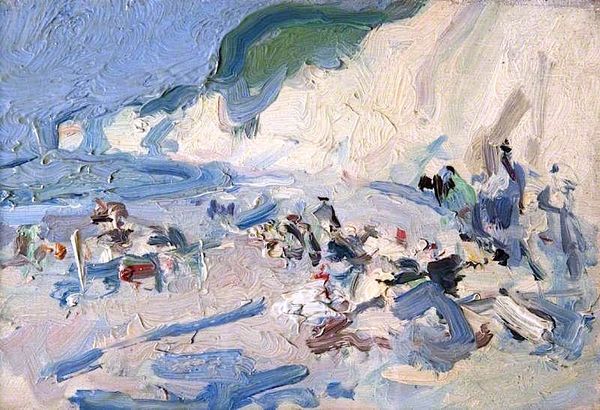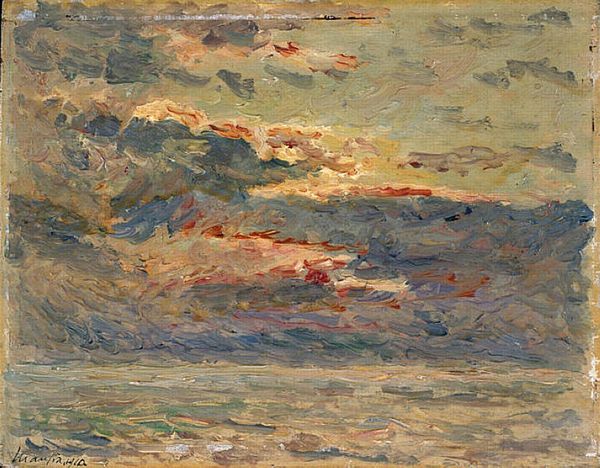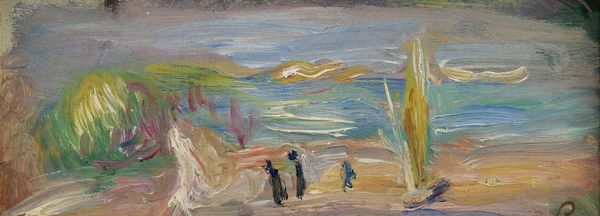
Copyright: Public domain
Curator: Ah, Peploe’s "Beach Scene," painted around 1910. I always feel a jolt of bracing sea air just looking at it. It's an oil on canvas. Editor: Yes! My first impression is of coolness, a kind of grey, muted energy that almost vibrates. It feels very... unromanticized. Are those figures on the beach? Curator: Indeed they are. He renders them with such immediacy, doesn’t he? Blobs of color, really, yet you sense their presence, their interaction with the space. Peploe was working en plein air, trying to capture a fleeting moment. Editor: And what about the politics of leisure here? Beaches, especially at the turn of the century, were becoming sites of intense social negotiation—class, gender, the very idea of public space being challenged and redefined. Who had access to this 'fresh air'? Curator: Absolutely. Though Peploe wasn't explicitly political, his choices reflect that shift. Unlike, say, Victorian portrayals, here we see less idealization, a more "democratic" representation of everyday people enjoying the coast. Editor: The brushstrokes themselves feel very decisive, very modernist. It's not about capturing every detail but about conveying the overall sensory experience—the wind, the light, the constant motion. I also find this palette really interesting; all blues and grays. Curator: I agree. It's almost monochromatic, a symphony in blue-grey! I believe this deliberate color choice conveys a sense of calm contemplation. Peploe loved the Scottish light, the way it could transform the mundane into something transcendent. Editor: Transcendent is a great word. He's managed to find beauty in the ordinary. These figures on the beach, almost indistinguishable from each other, collectively participate in the scene. The waves coming to shore equally for everyone. It feels profound somehow. Curator: It reminds us that we’re all just brief participants in something larger, doesn’t it? Fleeting impressions on a grander canvas. That might be its greatest impact after all. Editor: Beautifully put. It prompts us to really reconsider these sites not as purely natural landscapes, but as staged public places imbued with meanings.
Comments
No comments
Be the first to comment and join the conversation on the ultimate creative platform.
